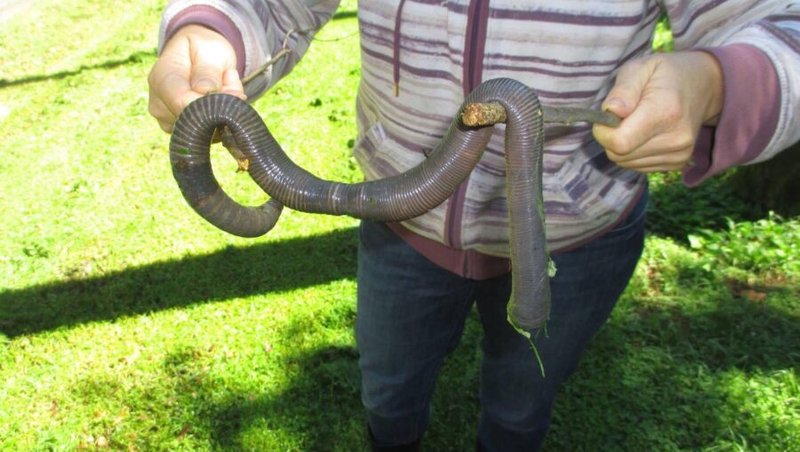
These earthworms aren’t just interesting because of their size; they have a specific habitat they prefer, which is crucial for their survival. Just like we all have our favorite cozy corners in our homes, the Giant Gippsland Earthworm thrives in particular conditions. Understanding these habitat preferences can give us insight into how we can protect them and the ecosystems they help maintain. So, let’s dig deep and explore where these remarkable creatures call home.
Understanding The Giant Gippsland Earthworm
Before we dive into their habitat preferences, it’s helpful to know a bit more about the Giant Gippsland Earthworm itself. These earthworms are unique not only because of their size but also because they’re endemic to a specific region in Australia. They typically inhabit the rich, moist soils found in areas like the Gippsland region.
These earthworms are fascinating creatures, especially when you consider how they help maintain soil health. They aerate the soil, which facilitates better water infiltration and nutrient distribution. Just think of them as nature’s little gardeners, working tirelessly underground. Their presence often indicates a healthy ecosystem, making them essential for biodiversity.
Preferred Soil Types
When it comes to soil, the Giant Gippsland Earthworm has some strong preferences. They thrive best in loamy soils, which have a balanced mixture of sand, silt, and clay. This type of soil is rich in organic matter, providing a perfect environment for the worms to burrow and feed.
Loamy soils not only offer the nutrients these worms need, but they also retain moisture well. So, if you were to imagine a perfect home for the Giant Gippsland Earthworm, envision rich, dark soil that feels crumbly in your hands after a good rain. In these conditions, they can better access food sources, like decaying leaves and organic debris.
Additionally, these worms also prefer soil that’s slightly acidic to neutral, with a pH range between 5.5 to 7.5. The right pH level is essential because it influences the availability of nutrients. Too acidic or too basic, and their food sources could diminish.
Moisture Levels Matter
Another significant factor in the habitat preferences of the Giant Gippsland Earthworm is moisture. They love damp environments. Rainy seasons or areas with high humidity are ideal for these creatures. Moist soil helps them move and burrow easily, while also assisting their breathing—yes, they breathe through their skin!
When the soil dries out, these worms face serious challenges. They can become stressed, affecting their growth and reproduction. This is why you’ll often find them in areas near water bodies, like rivers and wetlands, where the soil remains consistently moist. Think of it as finding your favorite café that serves the perfect brew—it’s all about that cozy, inviting atmosphere!
Temperature Preferences
Temperature plays a crucial role in the survival of the Giant Gippsland Earthworm. Ideally, these worms thrive in temperatures ranging between 10°C to 20°C (50°F to 68°F). They tend to become less active in extreme heat or cold, making them more vulnerable to environmental changes.
During warmer months, they often burrow deeper into the soil to escape the heat. Conversely, in winter, they might come closer to the surface as temperatures drop. These adaptations are crucial for their survival, but they also make them more susceptible to threats like climate change, which can lead to more extreme weather conditions.
Just like we adjust our plans according to the weather, these worms have their own ways of coping with temperature shifts. It’s a delicate balance, and any significant changes can impact their numbers and health.
Impact of Land Use and Urbanization
With the ongoing changes in land use and urbanization, the habitat preferences of the Giant Gippsland Earthworm are facing serious threats. As more lands are cleared for agriculture and urban development, these worms are losing their natural habitats. This can lead to a decline in their populations.
You might be wondering why this matters. Well, the decline of these earthworms can lead to soil degradation and loss of biodiversity. Fewer Giant Gippsland Earthworms mean less aeration and nutrient cycling in the soil, which can impact plant health and crop yields. It’s a domino effect that can lead to broader ecological issues.
Conservation efforts are essential to protect their habitats. This includes promoting land management practices that support healthy soil and moisture levels. Think of it as nurturing a delicate garden; every little action counts in helping these creatures thrive.
Conservation and Future of the Giant Gippsland Earthworm
The future of the Giant Gippsland Earthworm hangs in the balance, and it’s up to us to ensure their survival. Various organizations are actively working on conservation plans that focus on habitat restoration and awareness campaigns. By educating local communities about the importance of this earthworm, we can foster an environment that supports their needs.
Community engagement is vital. Activities like tree planting, maintaining natural reserves, and monitoring soil health can make a significant difference. Every individual can contribute in small ways, like encouraging native vegetation in your garden, which can help maintain local ecosystems.
In the grand scheme of things, protecting the Giant Gippsland Earthworm means preserving the health of our soils and the ecosystems that rely on them. Let’s nurture our earth just as these worms do!
Understanding the habitat preferences of the Giant Gippsland Earthworm helps us appreciate the complexities of nature. From the right soil types to moisture levels, and the impacts of human activity, it’s clear that these worms are more than just strange crawlers; they play a crucial role in maintaining healthy ecosystems.
By being aware of their needs and advocating for their protection, we can help ensure that these remarkable creatures continue to thrive in the wild. So, the next time you think about earthworms, remember the Giant Gippsland Earthworm and the small but significant role it plays in keeping our environment healthy. Let’s work together to guarantee these fascinating worms—the gentle giants of our soil—stick around for generations to come.

